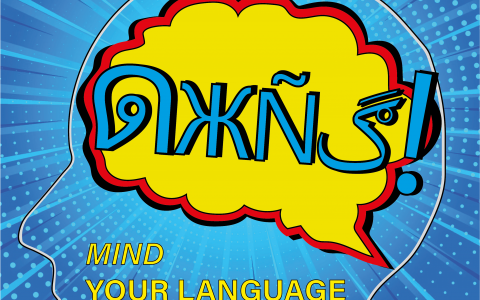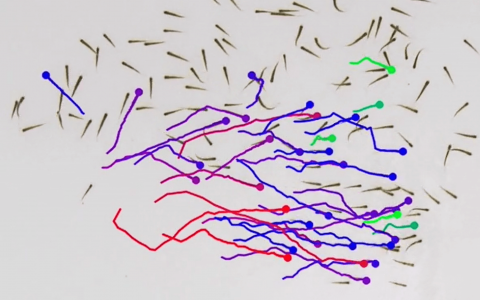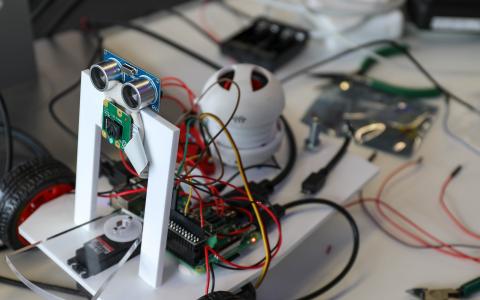
Keeping track of time and numbers: Brains versus machines
By April Cashin-Garbutt
“Time is a ghost of the events of the world” – a poetic description by J.J. Gibson, but one that hints at some of the key challenges of studying time perception.
Time can sometimes appear fast or slow depending on the context, but we know that we’re capable of keeping track of how much time has elapsed. How our brains achieve this was one of the key topics chosen by this year’s SWC/GCNU student committee for the Annual Student Symposium. A second related theme was numerosity, the ability to accurately process numeric information.
The SWC/GCNU student committee selected a thought-provoking line-up of speakers to share their latest findings on these topics and to discuss the important differences in how brains and machines keep track of both time and numbers.
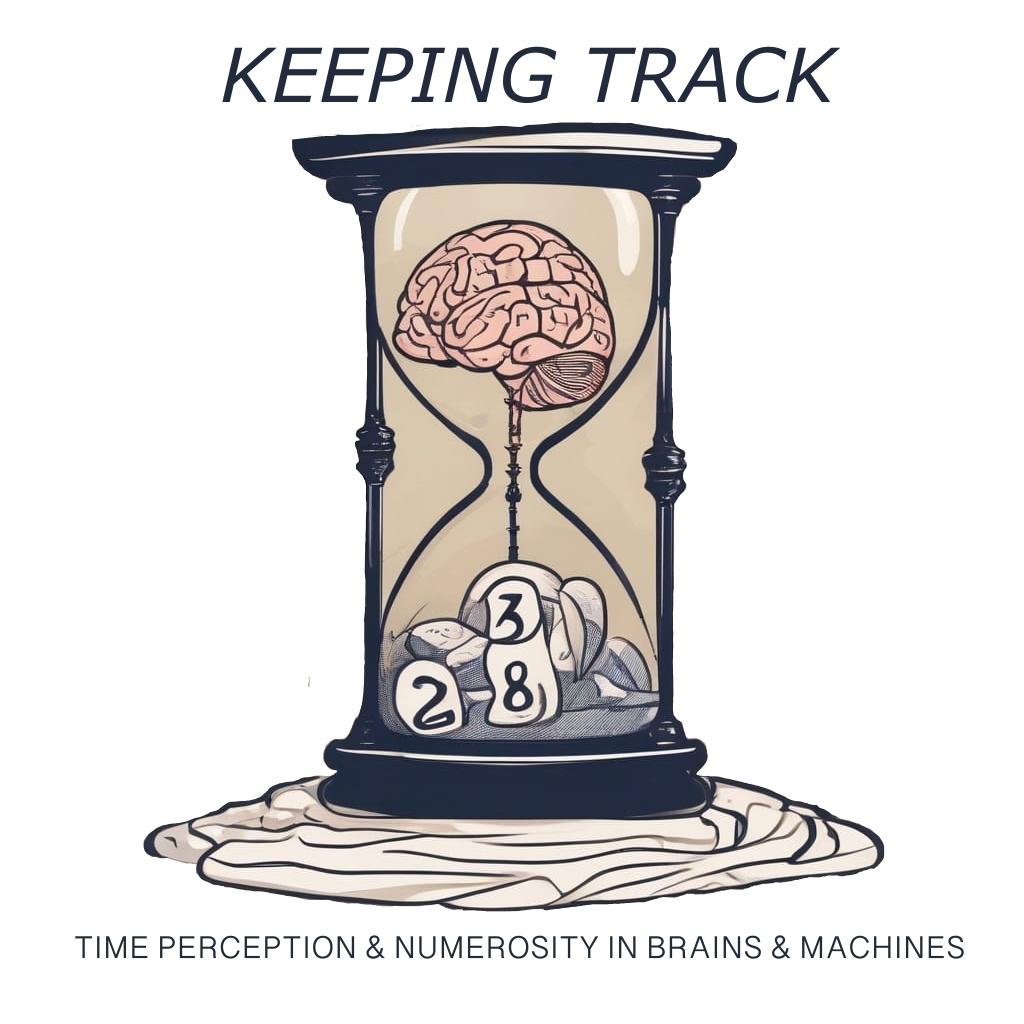
Human connection to time
Professor Hugo Merchant, from the Institute of Neurobiology at the National University of Mexico, kicked off the symposium with some fascinating insights into beat-based perception. As humans, we have an urge to move to the beat. We are able to detect a regular pulse in music and respond synchronously, for example during dancing.
Professor Merchant outlined his research exploring how the medial premotor cortex (MPC) encodes timing. His team found that MPC is a key player in beat-based timing, mapping time with other task parameters by dynamically engaging diverse cell populations.
This human connection to time was also a key theme in the second talk, which was given by Dr Martin Riemer from the department of Biological Psychology and Neuroergonomics at Technical University of Berlin. Dr Reimer emphasized how we are all creatures in time. He advised that sometimes it can be helpful to adopt Huw Price’s ‘view from nowhen’ to observe time in an unbiased way.
By comparing time to other dimensions like space and numerosity, Dr Reimer highlighted how it is not possible to present time instantly as it has to be presented in an ascending way. Furthermore, it’s not possible to present descending values of time as we cannot experience time backwards. This presents challenges when studying time and Dr Riemer argued that changes in timing behaviour do not necessarily reflect changes in time perception.
VR and timing in the real world
Dr Reimer also discussed the benefits of using Virtual Reality (VR) to study time perception. While some studies have shown immersive VR can make people feel like time has gone more quickly, such as in the Schneider et al. 2011 study of individuals with breast and colon cancer engaging in VR whilst undergoing chemotherapy; Dr Reimer demonstrated how VR doesn’t directly alter time perception itself. This is an important premise for the interpretation of effects within VR and shows the opportunities of using VR to study time perception.
The next speaker, Dr Jennifer Coull from Laboratoire des Neurosciences Cognitives (LNC) of Aix-Marseille University, focused on timing in the real world and how we implicitly build temporal expectations through experience. She presented a series of fascinating studies investigating the effects of manipulating the dopaminergic system (DA) on temporal processes in healthy human participants.
Dr Coull’s team used an amino acid drink, called acute phenylalanine/tyrosine depletion (APTD), to temporarily lower levels of dopamine precursors. She found that APTD impairs both perceptual and motor timing and the direction of the effect of APTD varied as a function of the baseline DA. Temporal selectivity was also demonstrated by controlling for working memory. Furthermore, Dr Coull highlighted that APTD affects timing by modulating SMA and BG activity when encoding/learning temporal information. She also showed that duration and temporal order processing are pharmacologically dissociable.
Numerosity in the brain
The afternoon sessions focused primarily on numerosity in the brain. Professor Andreas Nieder, Director of the Institute of Neurobiology at the University of Tübingen, began his talk by emphasizing the important role of the number system in our scientifically advanced culture.
He explained how his research has shown there are two non-symbolic number systems in the brain with a border at number 4. Recordings from single cells in the medial temporal lobe (MTL) of neurosurgical patients revealed neurons tuned to preferred numerical values presented in different formats.
The team observed different neuronal mechanisms for the rapid assessment of small numbers as opposed to an approximate estimation of large numbers. Professor Nieder also shared his research exploring the workings of the human brain during mental arithmetic.
Importance of replication
The next talk also focused on human recordings. Dr Karli Nave, from Western University in London, Ontario, discussed a pre-registered study on beat perception. In 2011, Nozaradan et al. found enhanced frequency-tagged electroencephalographic (EEG) brain activity at beat-related frequencies when listeners imagined a pattern as being in a duple or triple musical meter while presented with an ambiguous isochronous auditory stimulus. However, it was unclear whether these results represented repeatable evidence for musical beat perception reflected in brain activity.
Dr Nave described how the study was replicated in 13 laboratories with an added behavioural task that measured beat perception on each trial. The team found that exploratory non-registered analyses of variance (ANOVAs) showed a significant effect of imagery condition for beat-related frequencies, but effect sizes were considerably smaller than in the original study. Dr Nave explained how this finding of smaller effect sizes underscores the need to embrace practices such as pre-registration, a priori power analysis and replications.
Machine-learning perspectives
The final talk of the day delivered a machine-learning perspective on numerosity. Dr Aida Nematzadeh, from DeepMind, discussed the crucial ability of Artificial Intelligence systems to represent and reason about numbers in different contexts. She shared that while recent vision-language models are very impressive, numerical tasks are still challenging for the models.
Her team have been evaluating recent vision-language models (VLM) with respect to their ability to capture number sense – the basic numerical competence observed in animals and infants. They observed meaningful clusters and number ordering (in the range of 0 to 10) and found contributions from vision and language modalities, but there was a stronger linguistic contribution.
Dr Nematzadeh also described her work testing number discrimination in different families of vision encoders. Their results suggest that vision-specific inductive biases are helpful in numerosity discrimination, as models with such biases have lowest test errors on the task, and often have psychometric curves that qualitatively resemble those of humans and animals performing the task.
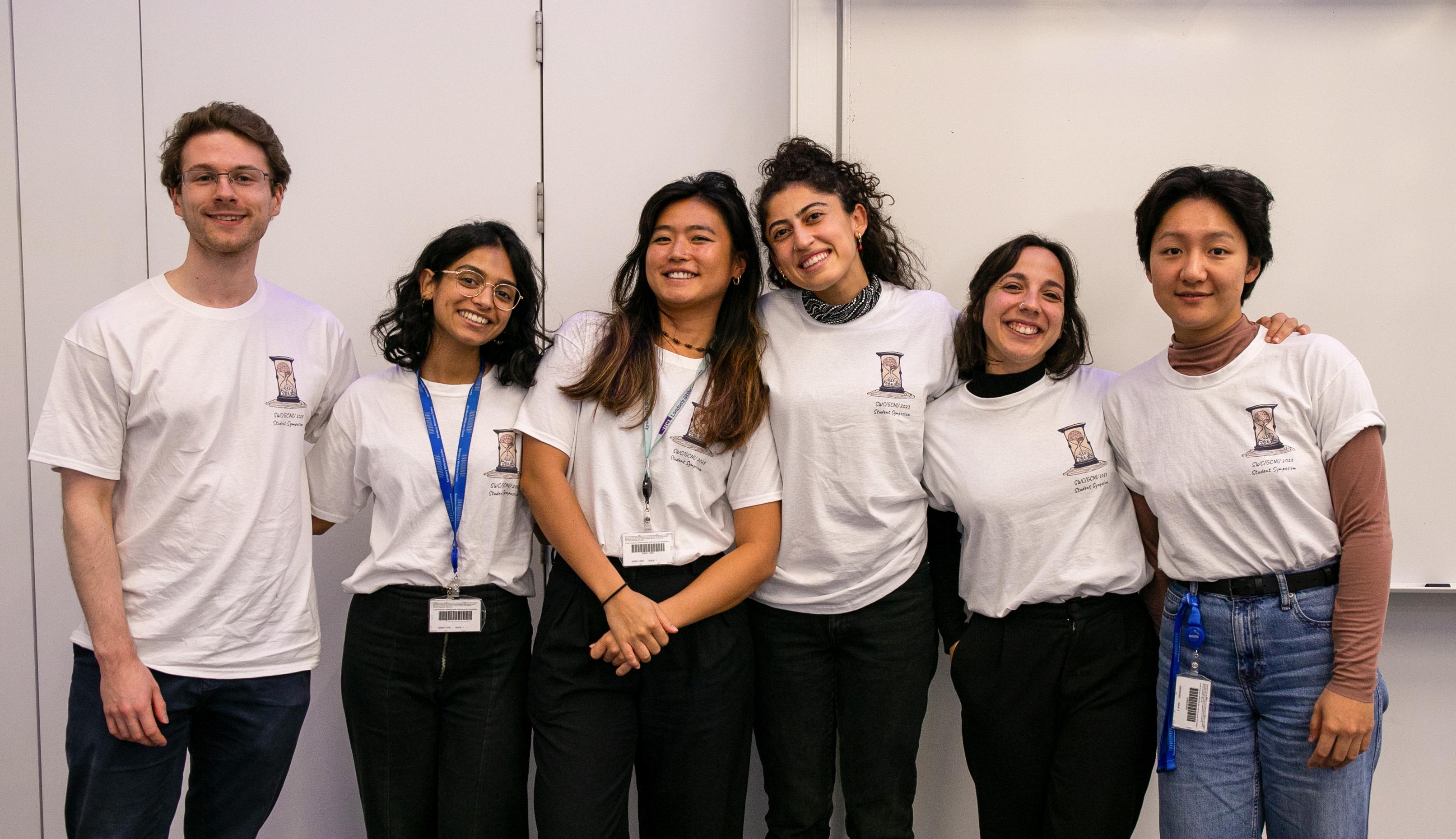
Student engagement
Following the excellent talks, SWC and GCNU PhD students were invited to meet with the speakers and put together proposals for collaboration. Small groups of students presented ideas for experiments based on the talks by the four in-person speakers – Professor Merchant, Dr Coull, Professor Nieder, and Dr Nematzadeh – and their presentations were judged by three SWC Group Leaders – Dr Julia Harris, Professor Andrew Saxe and Dr Jeff Erlich.
The running theme in the presentations was to adapt the human-, primate-, or ML-based work the speakers had presented to rodent experiments and behavioural analysis, capitalising on SWC’s technology and collective expertise.
About the Annual Student Symposium
The Annual Student Symposium is organised jointly by PhD students of the Sainsbury Wellcome Centre for Neural Circuits and Behaviour and the Gatsby Computational Neuroscience Unit of University College London. This was the sixth instalment of the annual discussion-based event that aims to bring together neuroscience researchers from the UK and abroad to engage with current and future problems in neuroscience. Find out more
